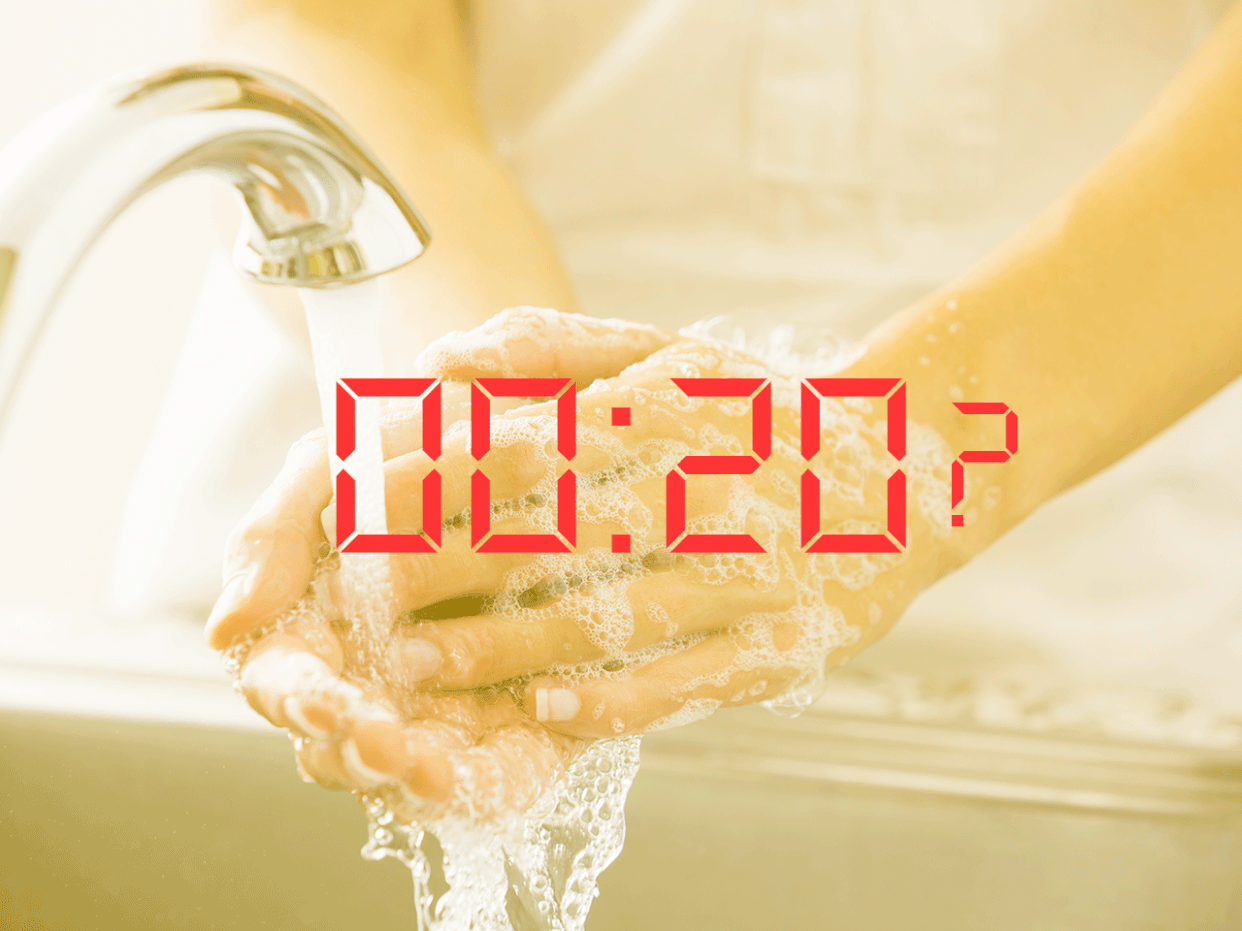This Is How Long You Should Actually Be Washing Your Hands

Have a health question? Email us at [email protected] and we might answer it in an upcoming Q&A!
Q: I know I need to wash my hands after using the bathroom, touching raw chicken, grabbing a mysteriously wet doorknob, or otherwise dirtying my hands. But how long should I actually spend at the sink?
Washing your hands well is a necessary building block for excellent hygiene. This simple action can help you get rid of pathogens like rhinoviruses (which can cause the common cold), influenza (which can cause the flu), and norovirus (which can cause stomach bugs). The longer they stay on your hands, the more likely you are to accidentally ingest them and get sick (or to pass them on to other people).
If you also need a refresher on how long to wash your hands, don’t be ashamed—it’s probably been years since your parents or teachers first taught you how to do it. To bring you up to speed, we chatted with Rachael Lee, M.D., assistant professor in the University of Alabama at Birmingham’s division of infectious diseases, and Meghan A. May, Ph.D., associate professor of microbiology at the University of New England College of Medicine. Here’s the deal.
Let’s start with the great news: You don’t actually need to wash your hands for eternity.
“I recommend what the Centers for Disease Control and Prevention recommends: Wash your hands for at least 20 seconds,” Dr. Lee says. Keep in mind, though, that this is how long you should be rubbing your soapy hands together. Applying soap, turning the water on and off, and other activities will add a few seconds.
Sounds simple enough, but you’re probably not going to whip out a timer in the bathroom. Instead, use this hack: As you rub your soapy hands together, sing “Happy Birthday” in your head twice to approximate how long it should take.
Now that we’ve touched on the time aspect, let’s get into actually washing your hands properly.
“There are five steps to handwashing,” Dr. Lee says, referring to the Centers for Disease Control and Prevention’s handwashing guidelines. “All of those steps have been shown to decrease germs on your skin,” she says.
First up, turn on the water, wet your hands thoroughly, then turn the faucet off (yay water conservation!). A strong flow of water can help dislodge some organisms thanks to simple physics, Dr. May says.
With that said, water on its own isn’t nearly enough to clean your hands. “I’ve heard some people say you just need to rinse your hands. That’s not true,” Dr. May says. Instead, view water as laying the foundation for soap. “Wetting your hands makes it easier to work up a lather,” Dr. Lee says. (You don’t really need to worry about the water’s temperature—no need to scald your hands for germ-killing purposes.)
“Soap is an extraordinary disinfectant,” Dr. May says, but it can only do its job if you leave it on for long enough. “Scrubbing for 20 seconds allows soap to penetrate into cell walls and destroy bacteria and viruses,” Dr. Lee says. The physical activity helps to remove organisms from your hands, too.
To that end, you should be scrubbing vigorously, covering your palms, the backs of your hands, your fingers (including between them), and underneath your nails, too. You don’t need to go out of your way to use antibacterial soap, Dr. Lee says: “Soap in and of itself can kill bacteria.” Ingredients added to get that “antibacterial” label, like triclosan, may promote antibiotic resistance, and experts are also concerned about their potential impact on human health. In sum, you can just use plain ol’ soap.
Finally, rinse and dry your hands well. “Germs can be transferred more easily to and from wet hands,” Dr. Lee says. Though the jury is still out on the exact best way to go about this, research points towards using a clean towel or air drying as the winners, according to the CDC.
What about that hand sanitizer, though?
Bad news for hand-sanitizer enthusiasts. “Handwashing and hand sanitizers are definitely not interchangeable. Handwashing is far more effective,” Dr. May says. Hand sanitizers don’t inactivate as many germs as the soap-water combination does, according to the CDC. Plus, Dr. May points out, rubbing your hands together for a few seconds until hand sanitizer dries pales in comparison to rubbing your hands together with soap and water for the recommended 20 seconds. Keep hand sanitizer with at least 60 percent alcohol on you for emergencies, but otherwise, soap and water will win every time.
Now you’ve got everything you need to actually wash your hands correctly—and potentially stay healthy in the process. “Because handwashing is so simple and commonplace, we don’t think about how critical it is in stopping the spread of disease,” Dr. May says. “It’s really important.”
Related:

